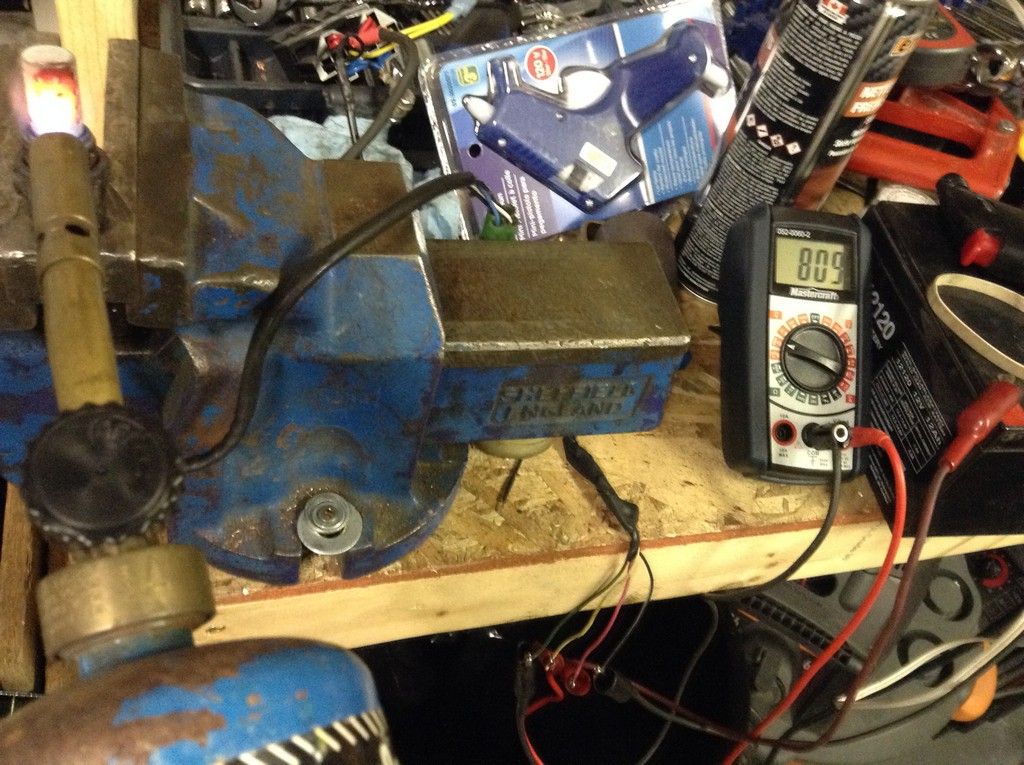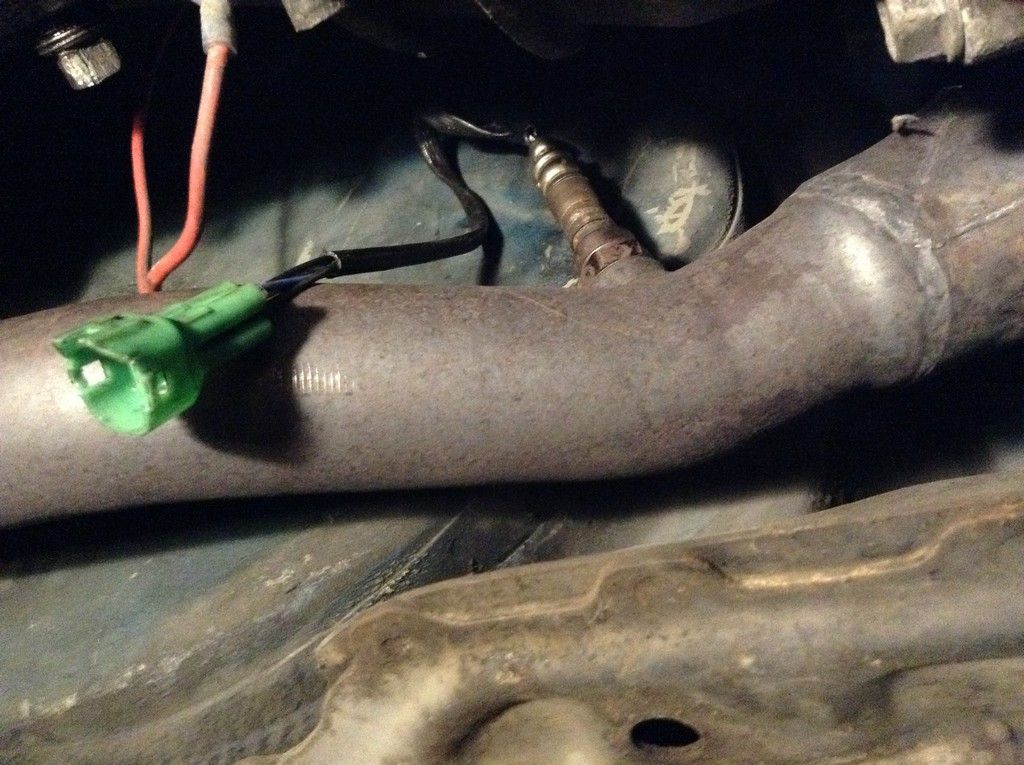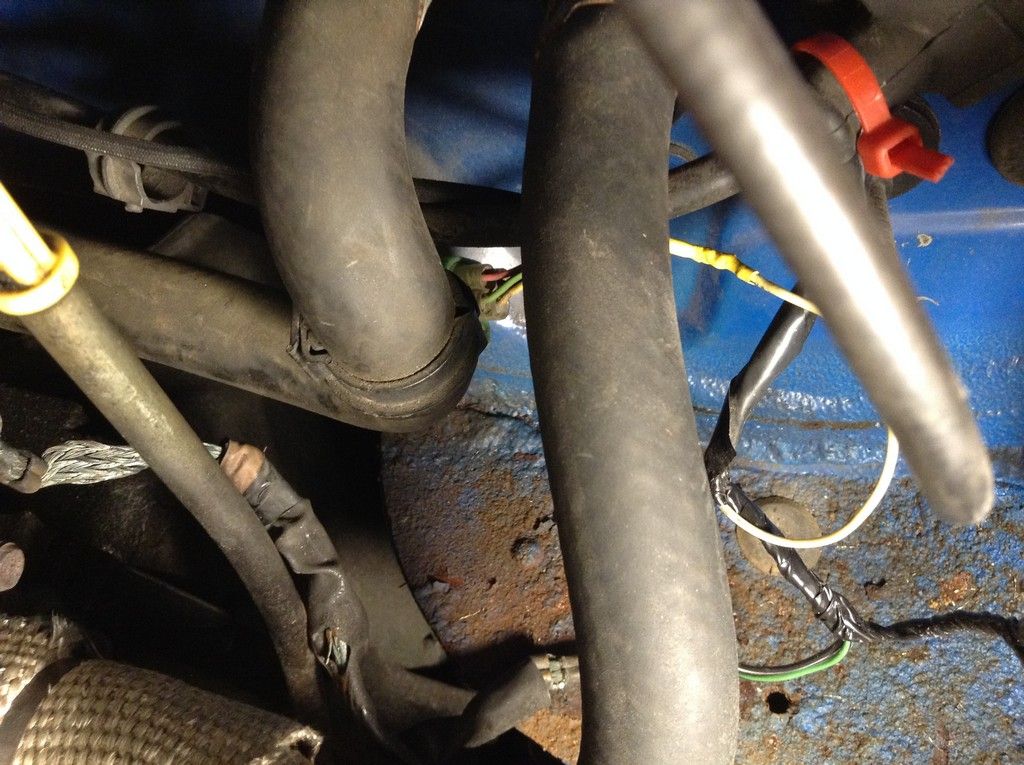Welcome!
On to this morning's project...heated O2 sensor!
Pulled both O2 sensors from the '98 Firefly(Metro)'s exhaust, just in case one worked better than the other. The down-stream one only has holes at the end of the casing, meaning it's designed to respond slower than the up-stream one from the manifold. Which isn't what we (I) want.
Then on to bench testing them:

They both worked very well. The
moment I started to pull the flame away, the reading would drop. I could wave the flame back and forth quickly and get an immediate response. Wonderful!
I let it cool off for a few minutes - other than from the internal heater, which didn't even draw a full amp - and waved the flame back over it, and got an instant reading still. Exactly what I need. I was concerned that little amp draw wouldn't be enough to keep it heated properly, but it did. Both sensors drew just as little current, so it seems that's how they're supposed to be, and the response concurs with this theory.
Had to clean up the threads, but otherwise it appeared I had a perfect-working O2 sensor at no cost.
Stuffing it in wasn't hard. Had to crawl under her to do it, though.

As you can see (or maybe not?) it's located right at the lowest bend where the pipe starts paralleling the transmission, mere inches off the ground. Probably explains why she ran better with the upper part of the header wrapped, which would help keep some of the heat in. And probably why she tended to run like a bag in particularly cold and wet weather, which would only help cool it off quicker. (This is all assumptions and theories, mind you)
Wiring it in, with the help of part of the Firefly's wiring harness:

You can just make out the connector between the two hoses. The black and green wires are connected at the ground bolt under the one hose where the main ground strap connects to the chassis(eww, rust). Black is ground for the heater, green is ground for the O2 signal. Heading off to the right is the red + wire, leading to the timing light connection (hot when ignition is on). And the yellow (looks white in the picture) is the O2 signal wire, soldered straight to the Miata's wiring.
The previous wiring (the red wire in the second picture) was just stuffed in to the end of the butt connector for the original wiring and crimped down. Probably not the best for a signal. Nor was the electrical tape coming off of it, which might have lead to grounding the signal out altogether.
Am I allowed to get annoyed with someone else's work when the object in question belonged to them at the time?

The preliminary results? Thrilling!

The idle dropped off much quicker after start up. She was purring at low idle within 30 seconds, when I got out to take a whiff of the exhaust, which had been notoriously rick smelling at idle. It just had that sweet smell of a healthy engine, not even the faintest smell of running rich. And the temp gauge hadn't even started moving yet.

I went for a drive, of course. She's a well-behaved lass now, until you take her over 4k rpm. Even with the engine still cold. The exhaust sound is much better...both from the tail pipe and the no longer excessive noise of the exhaust traveling through the pipe. Now there's just road noise and the thrum coming out the tail pipe. Very nice!
I hope it also means there will be a lot less heat being thrown off the catalytic converter, now that she's not running rich. You could feel it radiating in to the cabin on the driver's side, if you drove long enough on a warm day. Time will tell.
I've only driven it the once, so my findings aren't conclusive...yet. But I would say this is a
must for anyone with one of these headers. And probably recommended for anyone who does short trips and wants to maximize fuel efficiency on those short trips.
It seems it was well worth the effort.
